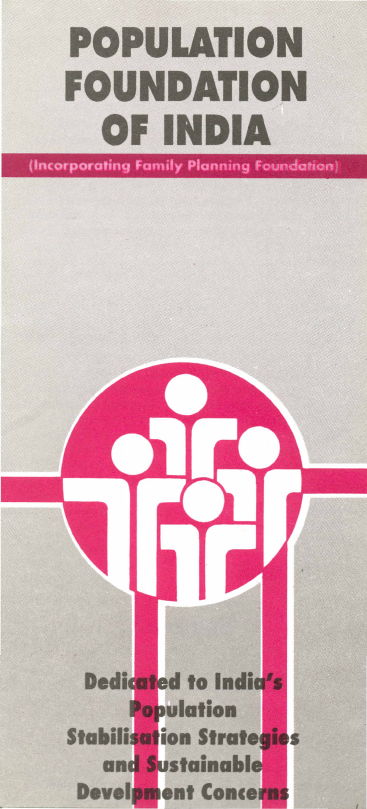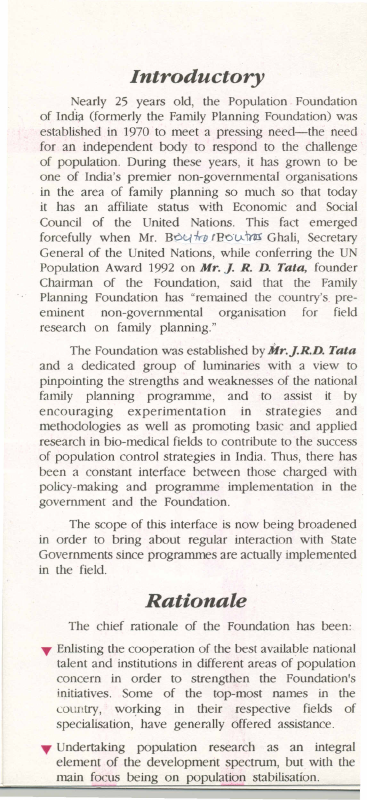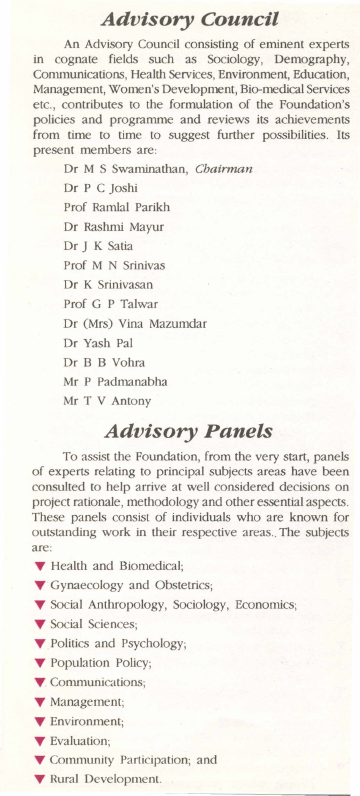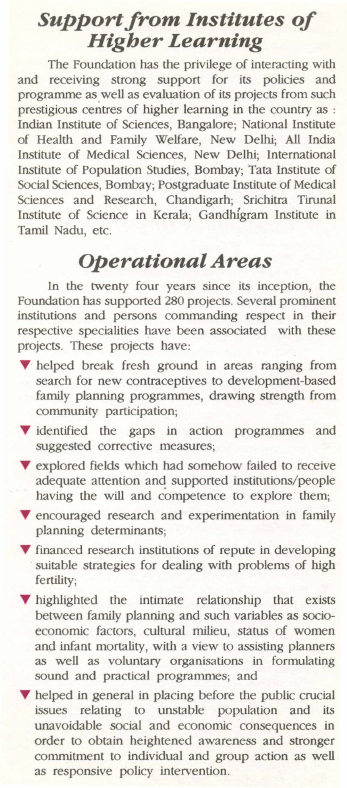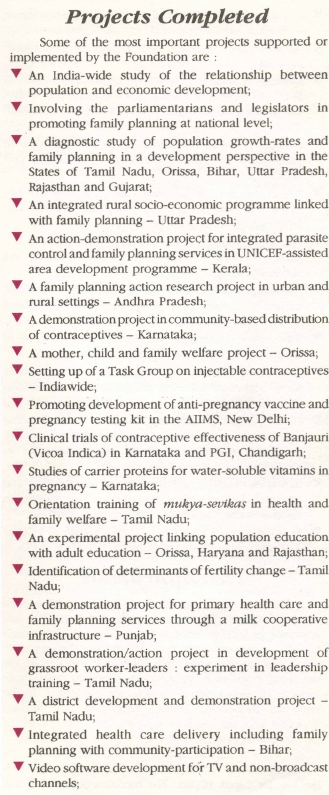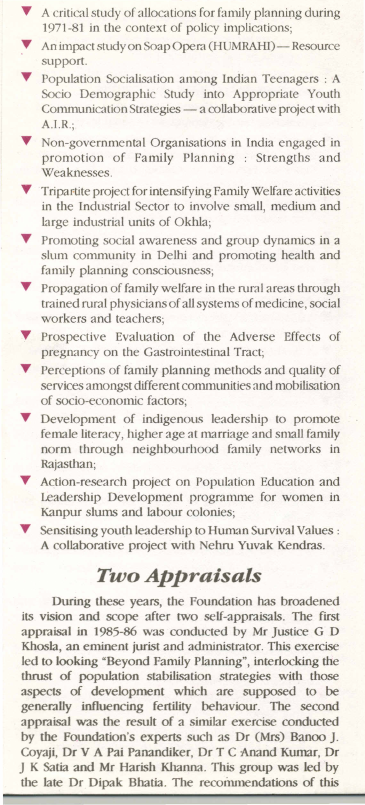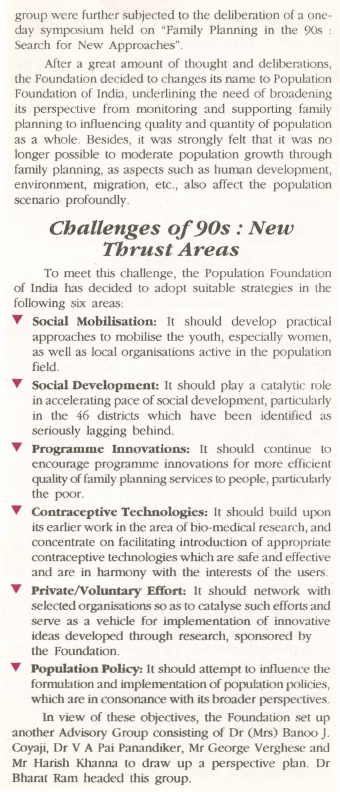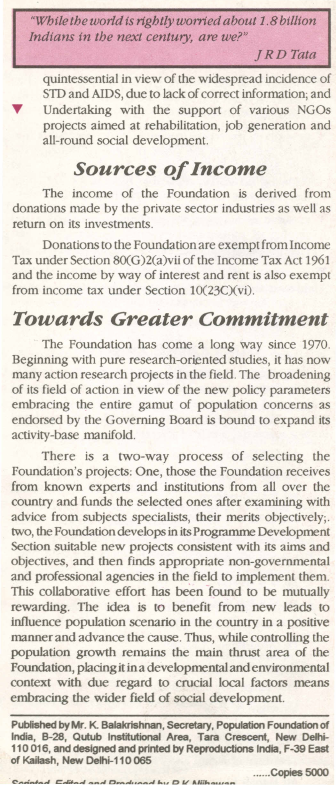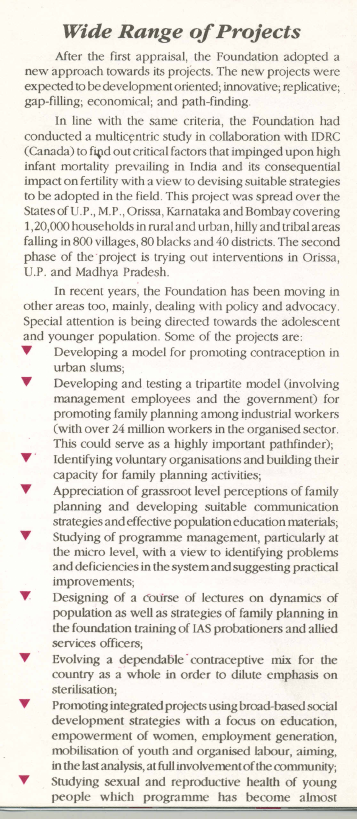
Wide Range of Projects
After the first appraisal, the Foundation adopted a
new approach towards its projects. The new projects were
expected to be development oriented; innovative; replicative;
gap-filling; economical; and path-finding.
In line with the same criteria, the Foundation had
conducted a multic~ntric study in collaboration with IDRC
(Canada) to f~d out critical factors that impinged upon high
infant mortality prevailing in India and its consequential
impact on fertility with a view to devising suitable strategies
to be adopted in the field. This project was spread over the
States of U.P., M.P., Orissa, Karnataka and Bombay covering
1,20,000 households in rural and urban, hilly and tribal areas
falling in 800 villages, 80 blacks and 40 districts. The second
phase of the'project is trying out interventions in Orissa,
U.P. and Madhya Pradesh.
In recent years, the Foundation has been moving in
other areas too, mainly, dealing with policy and advocacy.
Special attention is being directed towards the adolescent
and younger population. Some of the projects are:
T Developing a model for promoting contraception in
urban slums;
T Developing and testing a tripartite model (involving
management employees and the government) for
promoting family planning among industrial workers
(with over 24 million workers in the organised sector.
This could serve as a highly important pathfinder);
T . Identifying voluntary organisations and building their
capacity for family planning activities;
T Appreciation of grassroot level perceptions of family
planning and developing suitable communication
strategies and effective population education materials;
T Studying of programme management, particularly at
the micro level, with a view to identifying problems
and deficiencies in the system and suggesting practical
improvements;
• Designing of a coUrse of lectures on dynamics of
population as well as strategies of family planning in
the foundation training of IAS probationers and allied
services officers;
T Evolving a dependable' contraceptive mix for the
country as a whole in order to dilute emphasis on
sterilisation;
T Promoting integrated projects using broad-based social
development strategies with a focus on education,
empowerment of women, employment generation,
mobilisation of youth and organised labour, aiming,
in the last analysis, at full involvement of the community;
T Studying sexual and reproductive health of young
people which programme has become almost


